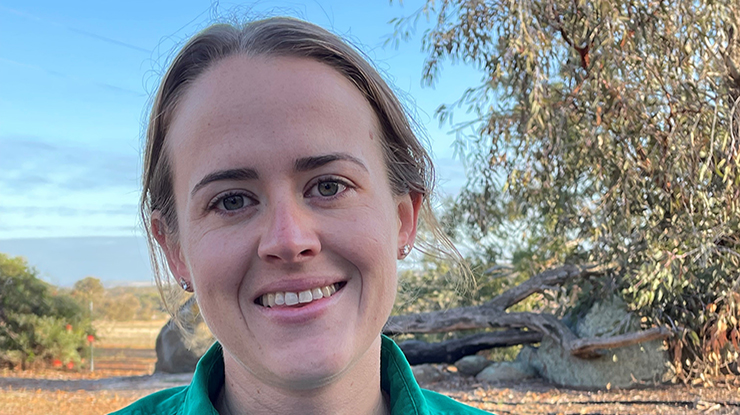
There are currently no evidence-based guidelines available for supplementary feeding ewes during lambing, with only anecdotal evidence suggesting self-feeders or trail feeding are better for lamb survival.
However, a partnership between MLA, Australian Wool Innovation (AWI), Murdoch University and Charles Sturt University aims to address these challenges through the Optimal supplementary feeding strategies for lamb survival project.
The project will develop recommendations for producers so they can make more informed decisions about supplementary feeding ewes during lambing.
Murdoch University Project Lead, Dr Amy Lockwood (pictured), said producers had several questions about the best methods of supplementary feeding ewes during lambing for lamb survival such as:
- what time of day they should feed ewes
- the proximity of feeding to watering points and shelter
- if they should use trail feeding or self-feeders
- if they should use alternative methods such as broadcasting lupins.
Amy said the project will provide producers with information at the farm level to help improve productivity and increase lamb survival.
What the project involves
The first stage of the project is assessing whether self-feeders or trail feeding lead to better lamb survival at 24 on-farm research sites across southern Australia.
Sensor technology is also being used at a subset of these research sites to investigate the impacts of the supplementary feeding method on the behaviour of ewes during lambing.
Intensive experimental work in the second stage of the project will be informed by the outcomes of the first stage of the project, but could include evaluating the impacts of the proximity of feeders to watering points or shelter and the time of feeding on lamb survival and ewe behaviour.
AWI Reproduction and Nutrition Project Manager, Emmah Goldsmith, said the outcomes of the project are important to all sheep producers, whether they have a wool or meat focus.
“The effect of supplementary feeding method on lamb survival has been a long-standing knowledge gap and growers have been calling for evidence-based answers,” Emmah said.
“The guidelines produced from this project will be a valuable addition to producers’ toolkits, especially as climate variability increases.”
Get involved
Amy said the project is looking for more research sites and she encouraged producers who want to be involved and have supplementary feeding as part of their planned management for lambing to contact the research team (see below).
The project is targeting producers who lamb in autumn, however producers who lamb winter or spring will also be engaged as research sites when ewes require supplementary feeding during lambing due to limited pasture availability, such as in dry seasons.
A minimum of 300 single-bearing and 160 twin-bearing ewes are required per farm (no maidens) to participate.
Ewes will be allocated to be fed via self-feeders or trail feeding during lambing and the impact on lamb survival will be assessed to marking.








